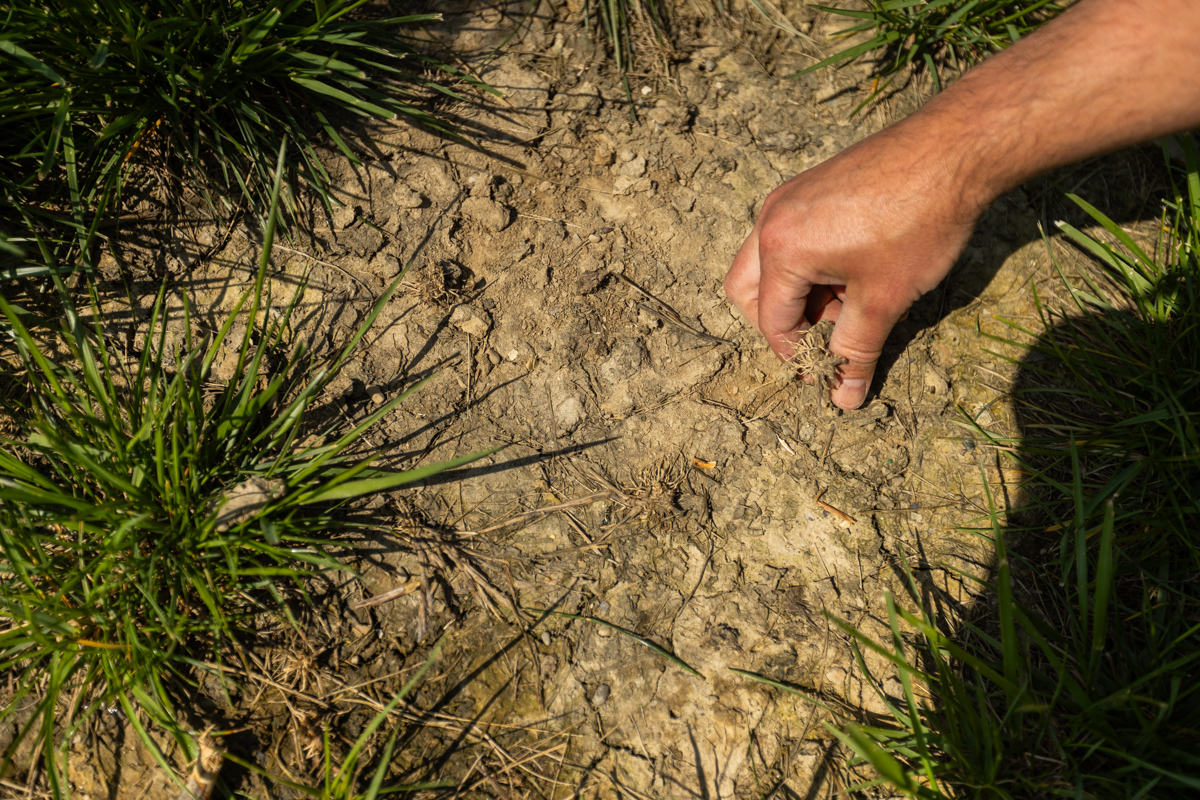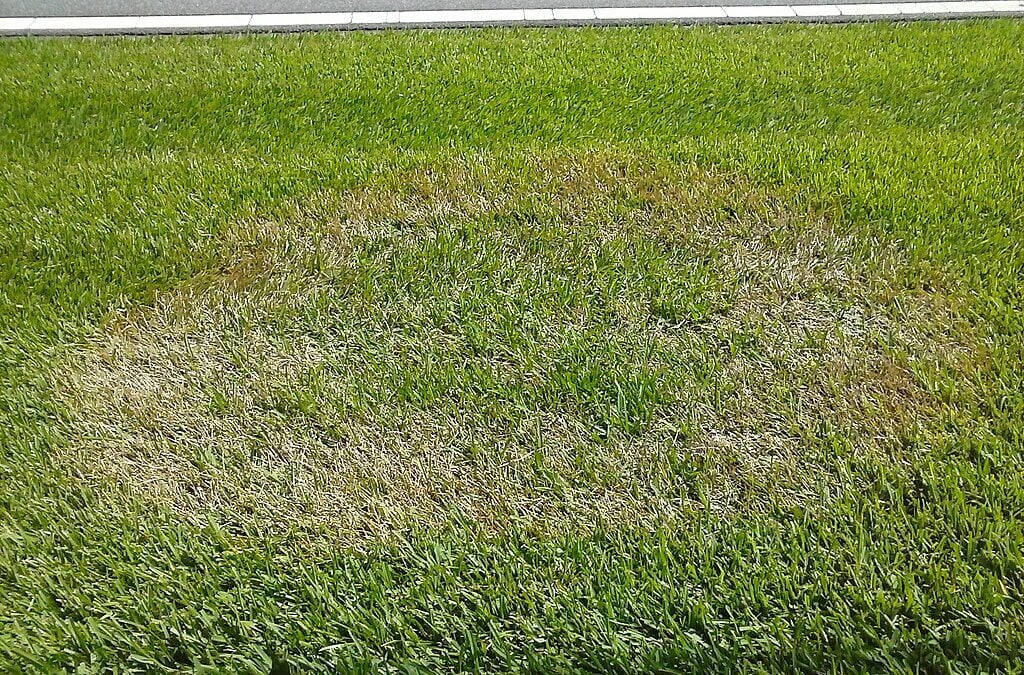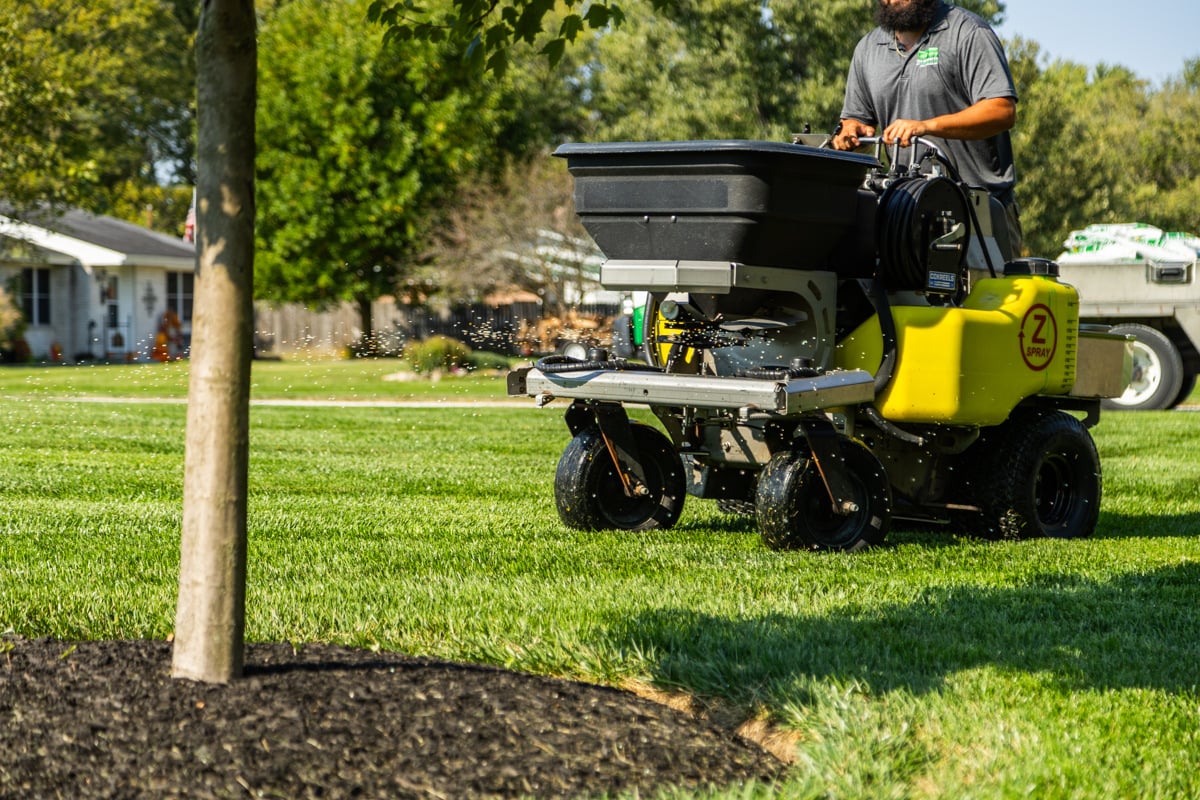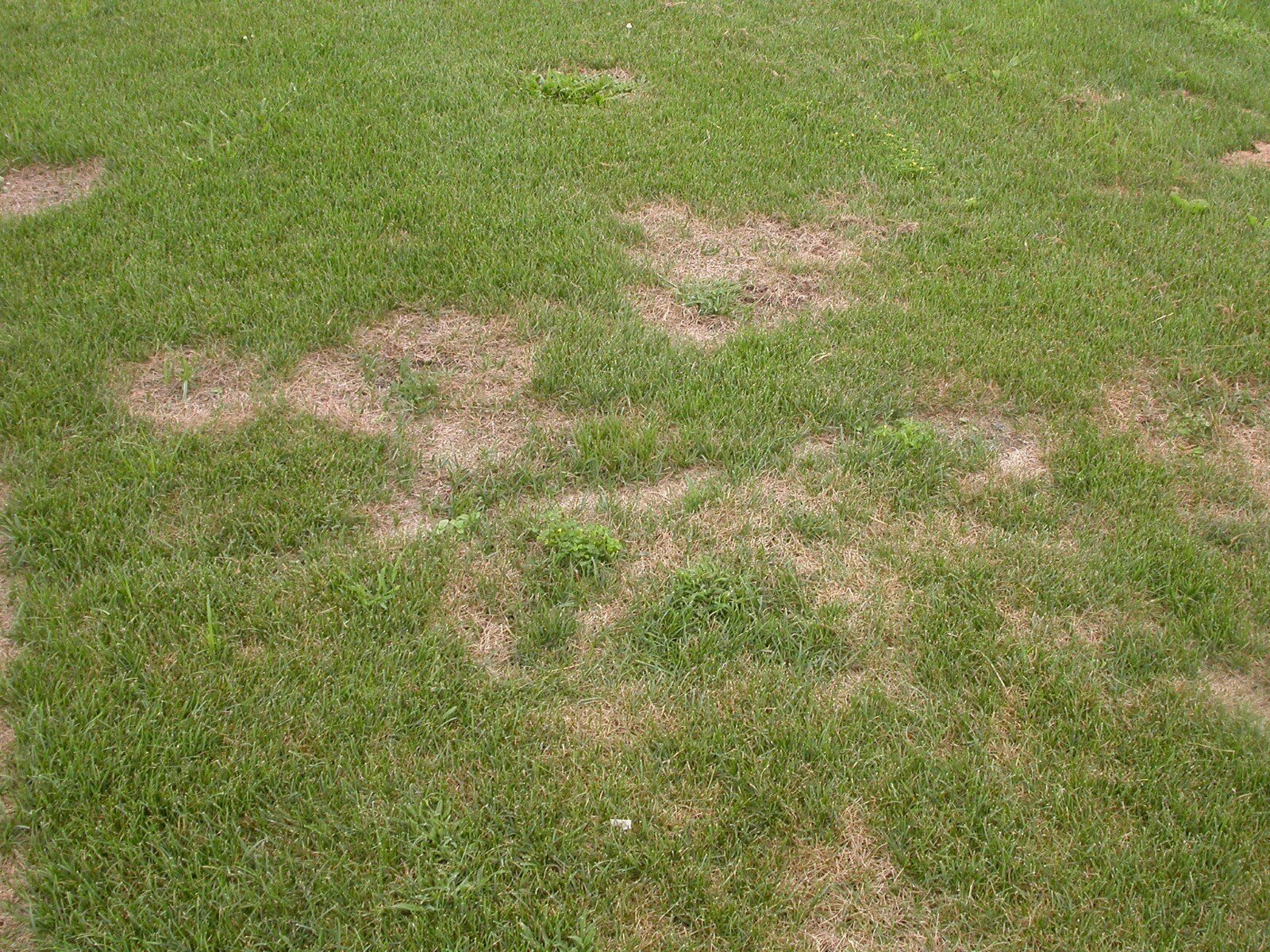



You step outside and take a deep breath of warm Indiana summer air, ready to admire your beautiful backyard, when you notice a weird brown circle. Then another. And another. Suddenly, your once green and lush yard looks like a polka-dotted mess.
Meet Brown Patch Lawn Disease, a summer-time lawn fungus that loves to ruin your green grass dreams. Thankfully, you can prevent brown patch in most situations. In fact, there are plenty of easy ways to stop lawn diseases before they start and a few solid strategies for brown patch control if it has already set in.
Let’s break down exactly what brown patch is, what it looks like, what causes it, and what you can do to stop it from taking over your turf.
Brown patch lawn disease is a fast-acting, sneaky fungus that targets your grass’s leaves, which are the part that makes your grass look green and full. The good news? It doesn’t mess with the roots or crowns, so your lawn does have a chance to bounce back.
You will find brown patch fungus creeping into high-maintenance turf types, like Kentucky bluegrass, and it is not shy about showing up in taller-cut lawns either. If you have turf-type tall fescue or perennial ryegrass, you are still at risk of brown patch lawn disease.
This lawn disease is a summer disease and, under the right warm and humid conditions, it can pop up literally overnight. One day your lawn looks great, and the next morning it is patchy! However, since it doesn’t go after the roots, your lawn will bounce back as long as it is not dealing with a ton of extra stress, like lots of foot traffic, drought, or pest damage.
So, how do you know if your lawn has a brown patch fungus situation going on or if it is just being dramatic after a long, hot day?
Depending on your grass type, brown patch can show up as:
Unfortunately, brown patch fungus is caused by a fungal pathogen that has a serious grudge against all cool-season grasses. The fungus gets to work when the weather warms up. If hot, humid days are happening and nights are not dipping below 65 degrees, brown patch lawn disease will get to work.
If you have been fertilizing with heavy nitrogen-based fertilizer a little too much, the disease can get way worse.
Okay, so your lawn has caught a case of the dreaded brown patch fungus. Now what? Don’t panic, you’ve got options. Here’s what you need to know:
While there are some effective fungicides out there for brown patch, they are typically overkill for most residential lawns. If your lawn is healthy and thriving, give it some time on its own to bounce back.
If brown patch lawn disease is getting really out of hand and you are considering chemical treatment, hire a professional lawn care company to do it. Fungicides are picky, and spraying the wrong thing at the wrong rate can be a waste of time and money.
Brown patch fungus loves a lawn that has been given too much fertilizer. All that nitrogen makes the grass grow fast, but unfortunately, that fresh grass can toughen up in time, and the fungus can easily swoop in. 
As with most things in life, it is way easier to prevent brown patch than to fix it after the fact.
Here is how to keep your turf fungus-free in the future:
Skip those late-night watering sessions. Water early in the morning or during the day so your grass has time to dry out. Long, wet grass blades sitting in the evening dew are a dream for brown patch.
Good air circulation can help your lawn dry out faster, which means less fungus. Keep trees and shrubs trimmed back and off the ground.
Your lawn doesn’t need heavy fertilization in the heat. Stick to a regular schedule that doesn’t bulk up on nitrogen when it is already stressed from the weather.
Not all grasses are built the same, and not all fescue is created equal. Some varieties are more resistant to brown patch lawn disease than others. Knowing what type of grass you have helps you understand what diseases it is most prone to.
Home builders typically slap down cheaper seed that is more likely to be disease-prone. Introducing better genetics through overseeding and reducing compaction through core aeration can help boost your lawn’s natural resistance to all common lawn issues, not just brown patch. Aeration helps air flow directly at the turf level as well.
Brown patch looks like a lot of other lawn diseases, and the wrong diagnosis means the wrong treatment.
Brown patch lawn disease is one of those problems that seems to show up out of nowhere. It’s frustrating, sneaky, and it doesn’t play by the rules. Part of what makes it so tricky is how easily it can be mistaken for other lawn diseases. Plus, the things that cause it, like weather, watering habits, and fertilization timing, aren’t always easy to control. And let’s be honest, most homeowners don’t have time to enroll at Purdue for a turf science degree and spend their weekends inspecting their turf with a magnifying glass to figure out what is wrong.
At Shades of Green, we know lawn diseases. We know what to look for, how to treat it when necessary, and most importantly, how to help you prevent it in the future. Whether it is through smarter fertilization, overseeding with disease-resistant varieties, or making just a few small adjustments to your routine, we are here to help you make your lawn the healthiest and greenest it can be.
Ready for some help with brown patch control in Lafayette, Carmel, Noblesville, Westfield, Zionsville, and Nearby Areas? Get started by filling out our contact form.
Image Sources: brown patch lawn disease

Cory is the heart and soul of Shades of Green. His dedication to doing right for our customers has been the driving force behind the company's success. With a degree in Turf Science from Purdue University, Cory continually strives to craft the best treatment plans using the latest technologies and innovative products, ensuring top-notch results for every client.





